Without question, brick tops the list of building materials with historic significance. Brick was used by early American colonists in the 17th century, with the first brick kiln manufactured in Salem, Massachusetts in 1629. In our architecture, brick is chosen for its character-rich presentation and durability and may be specified for uses including facades, floors, chimneys, and more. Enthusiasts often inquire about the type of brick directed for each use case. Below, we are pleased to answer the ask.
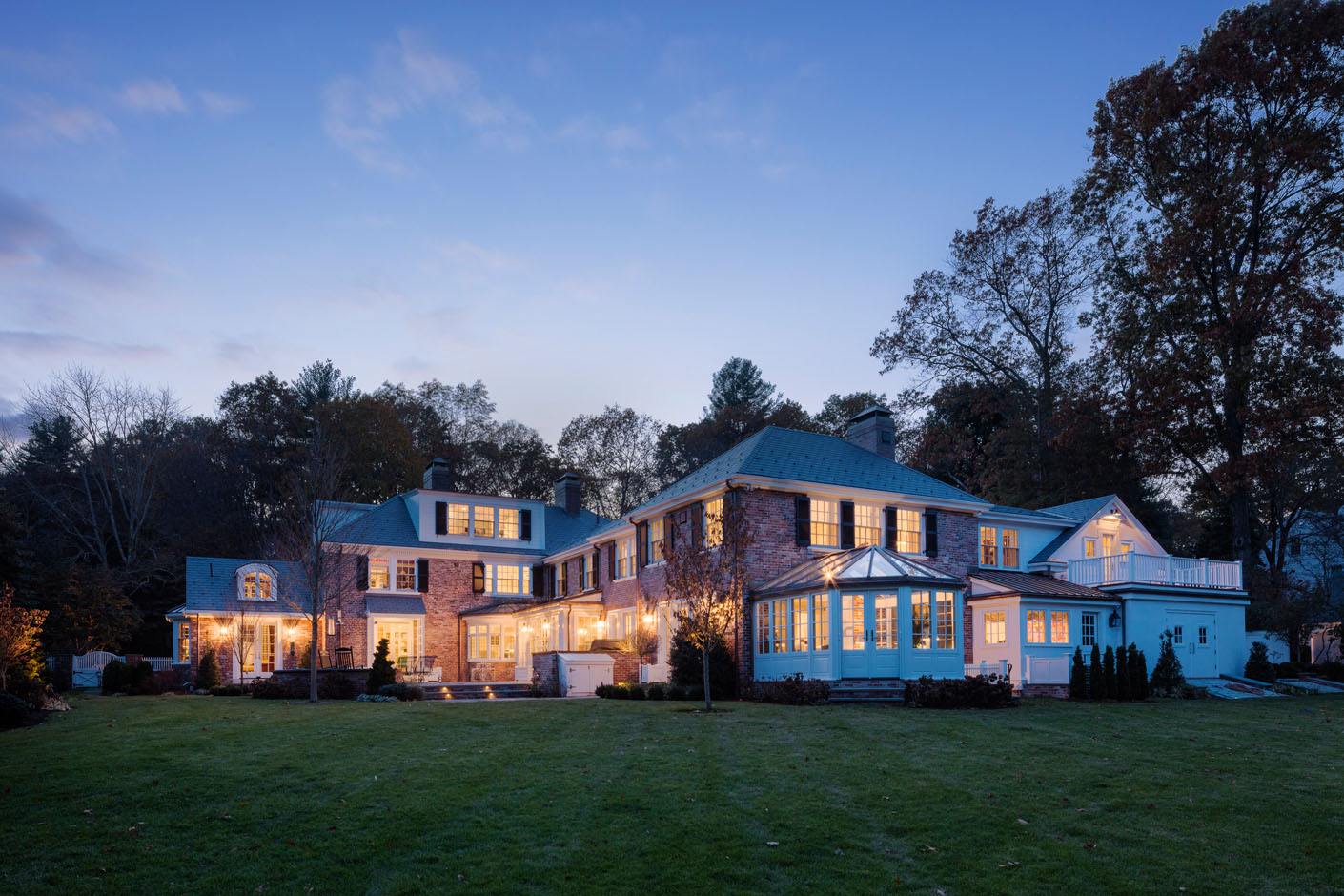
Outside, On a Facade or Underfoot
When it comes to a home’s facade, we specify real clay-fired brick. In restoration or renovation work, when pre-existing or historic brick is featured on the original structure, it is important to tooth in new brick and carefully match it such that modifications or additions blend seamlessly to the naked eye. In our region, brick molds that match historic brick—particularly brick featured in Boston’s Back Bay—are readily available, and as such we have can mimic existing material fairly easily.
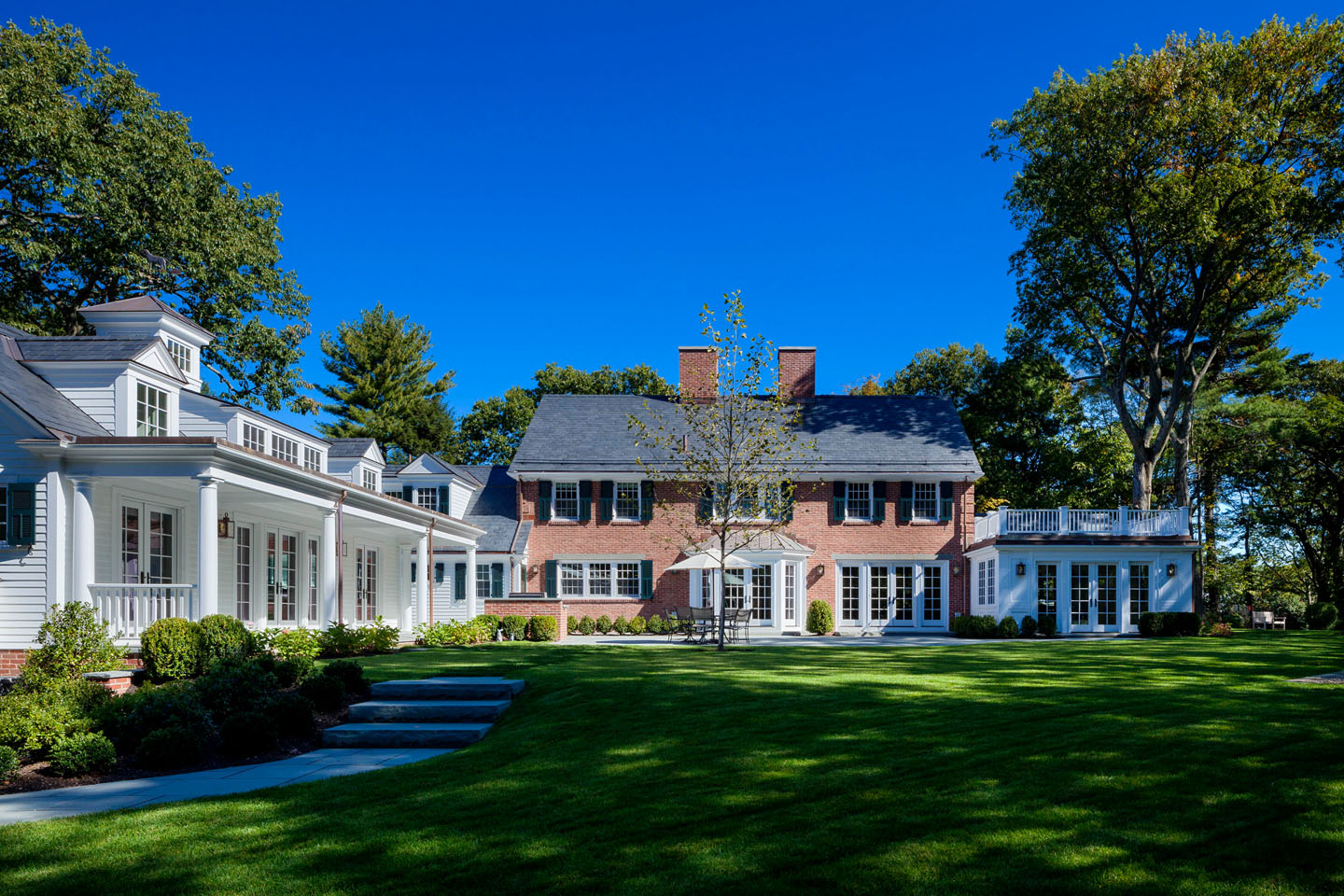
On a property’s exterior, we may specify brick for a pedestrian pathway from the street or driveway to a front or family entrance. Often seen in the Edgartown Village Historic District on Martha’s Vineyard, these footpaths, too, are specified in real brick. Similarly, brick edging on a stone walkway may feature full bricks end to end or a soldier course of brick along the sides to delineate the path.
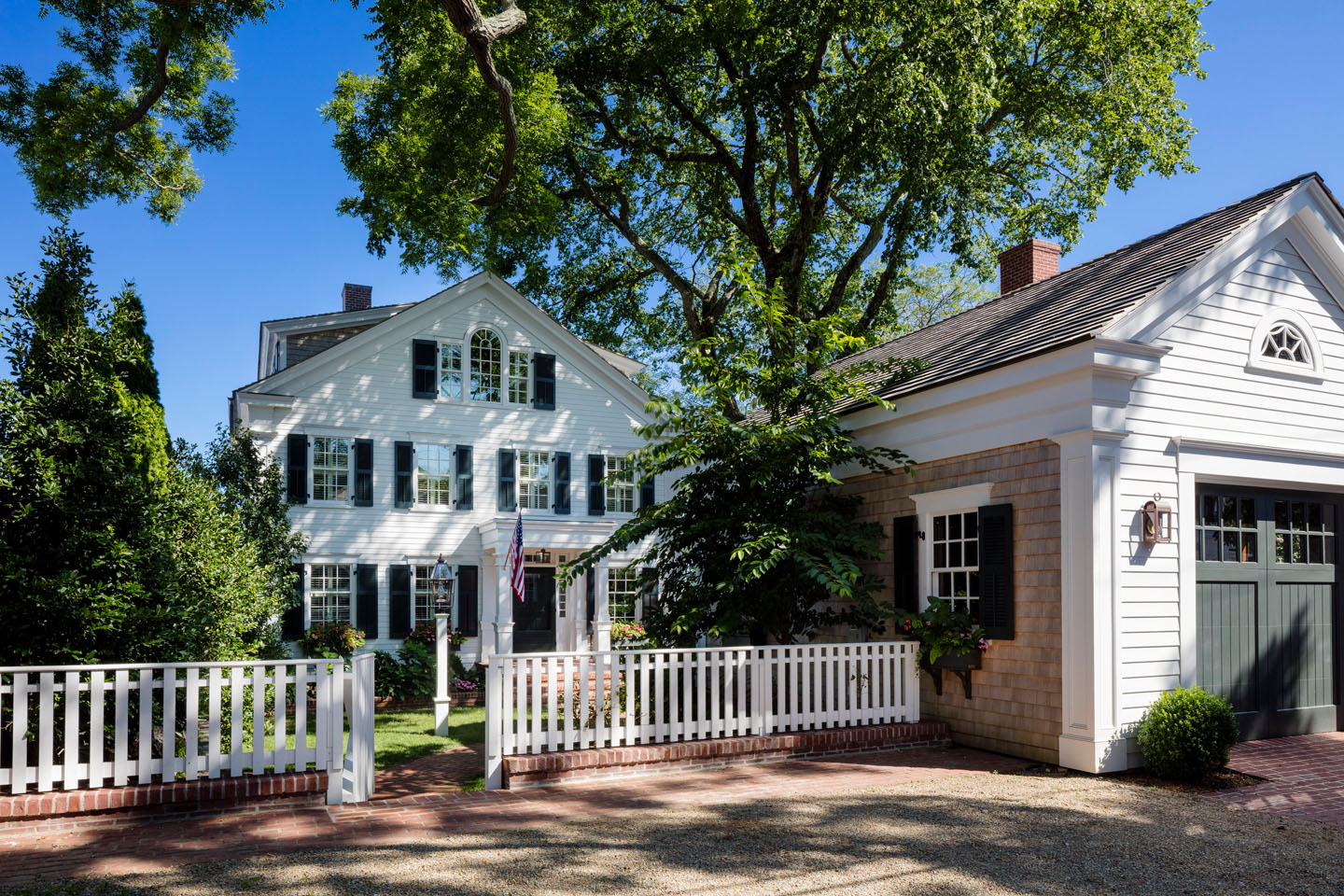
Inside, Under Foot
Thin brick—a product that is pre-cut real kiln-fired brick in thicknesses ranging from ½”-1”—is also exceptionally popular as a flooring material. Often used in mudrooms, potting rooms, or elsewhere in historically-inspired properties, traditional patterning like herringbone or basket weave may be featured with a soldier course or running bond border to define the space. As a bonus, some manufacturers produce thin brick in sheets that can be installed quickly and simply by a tile professional. With a variety of colorways and variations in size and edging, there is a true range in thin brick that can complement both timeless architecture and almost any decor.
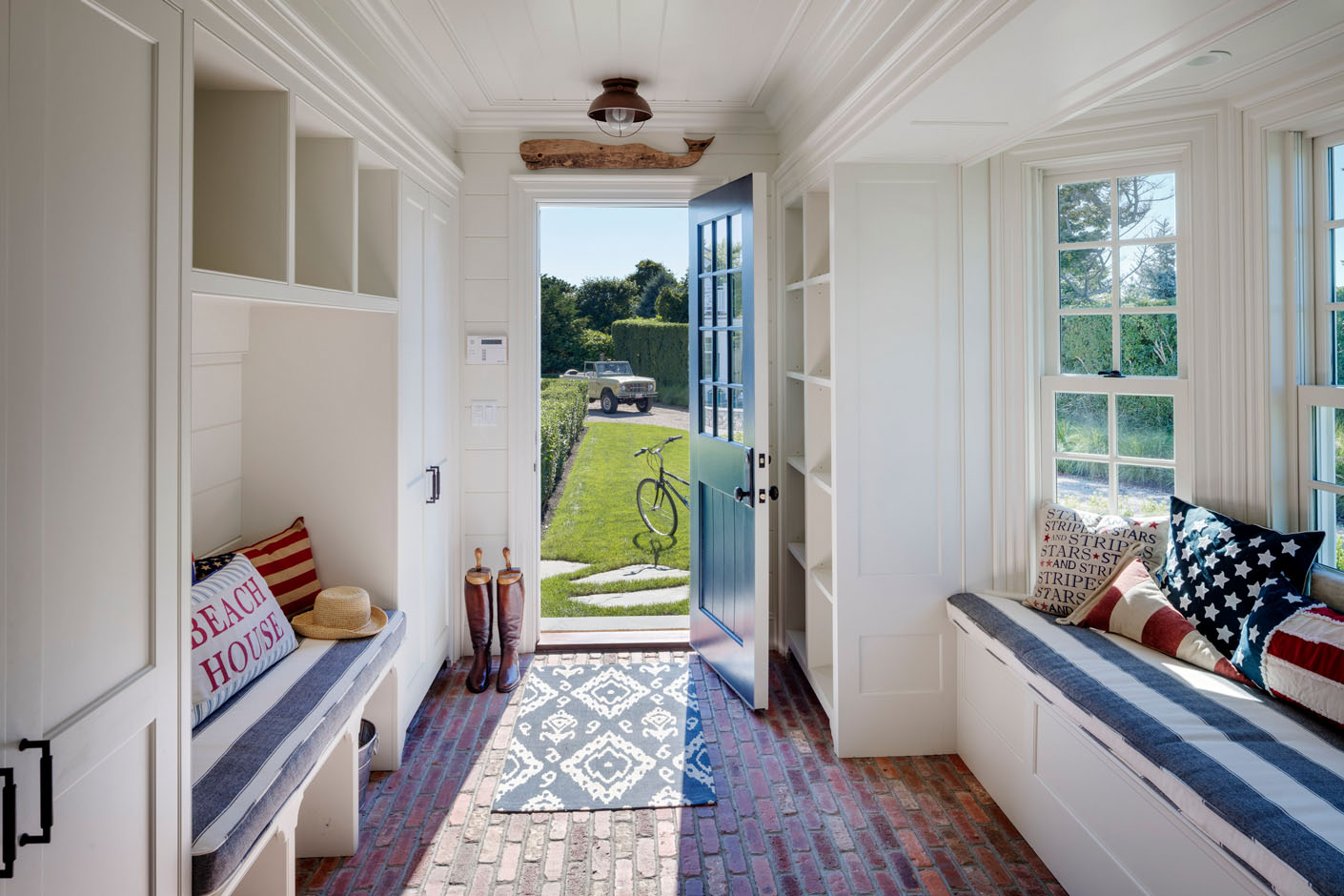
Chimneys
There are two ways to consider a brick chimney. The first option is more substantial—a complete masonry chimney built from the ground up, at times with decorative patterning or intricate brickwork on exterior-facing sides. These true masonry chimneys require significant investment and can be customized with multiple flues if needed. When cost may be a concern, a second option is popular: instead of a full masonry chimney, a pre-engineered flue can be used inside a plywood box with thin brick applied to the outside. Detailed with a proper cap at the top, this thin brick execution can achieve an almost identical chimney presentation for a fraction of the cost.
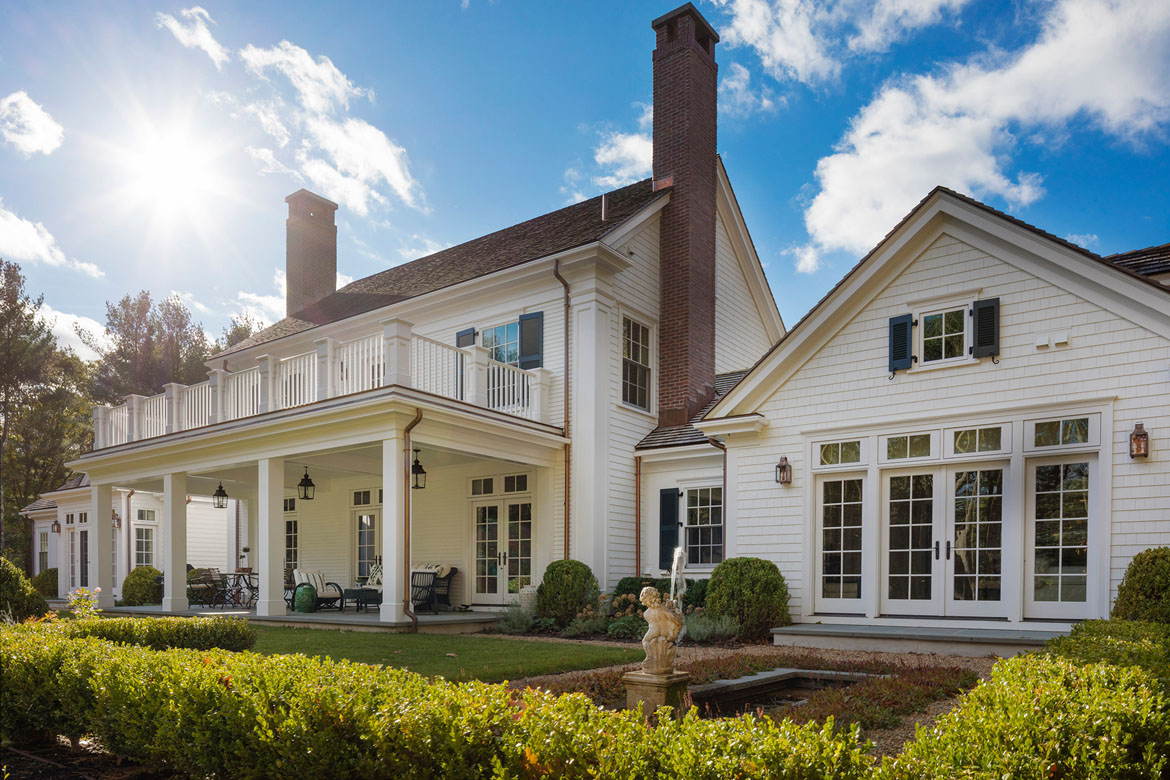
In a Carriage House
When it comes to carriage house floors, we have specific direction for brick. Once a concrete floor is set, we specify thin brick to be installed directly over the concrete, often choosing a style to match Boston City Hall pavers for an authentic look. Once installed, we direct the application of 4-5 coats of matte urethane. When the urethane is dry, oil, grease, snow, or dirt from a car can fall onto the thin brick floor and be wiped right off without soaking into or staining the brick product.
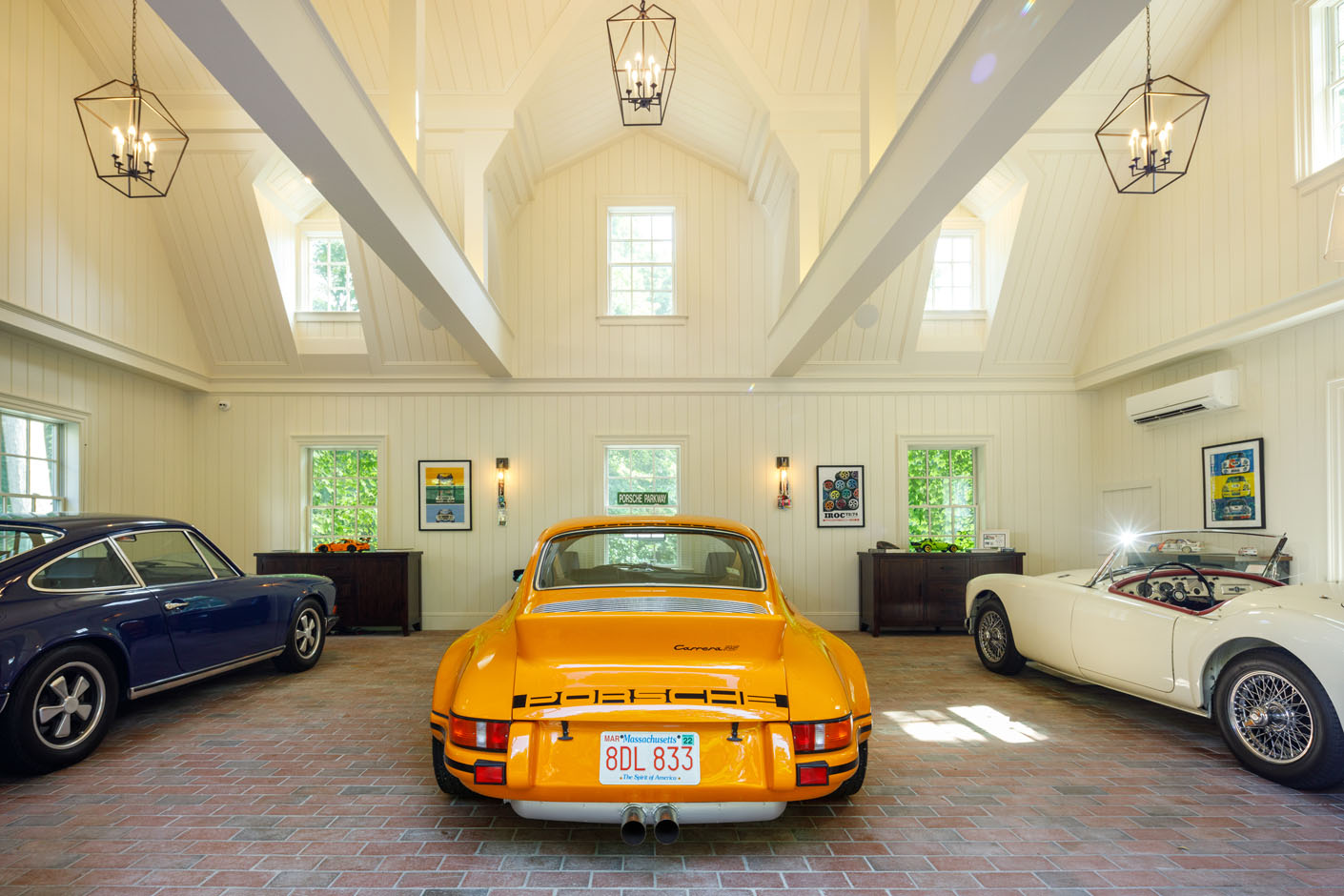
Decorative Executions
Whether indoors or out, thin brick is our choice for decorative executions. Often on an exterior, we consider a thin brick veneer over a concrete foundation to add a heightened level of finish to a home. We may also consider brick veneer over existing concrete steps; individual corner pieces of thin brick can help make this execution successful. Last, sometimes we add accent walls of thin brick to help build the narrative of a home, backdating newer builds. In this way, we can tell a story of a space like a tavern room which could have been original to a much older property without having to support the weight of full dimension brick inside new construction.
If our executions of brick have you rethinking your own property, contact us to learn how we might approach your project. In the interim, we invite you to find meaningful inspiration in our portfolio.